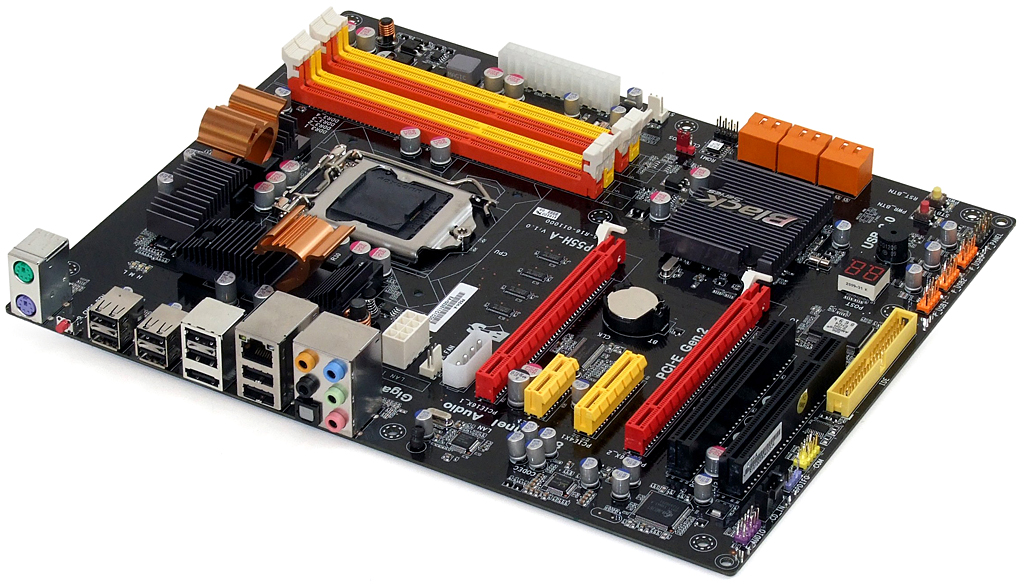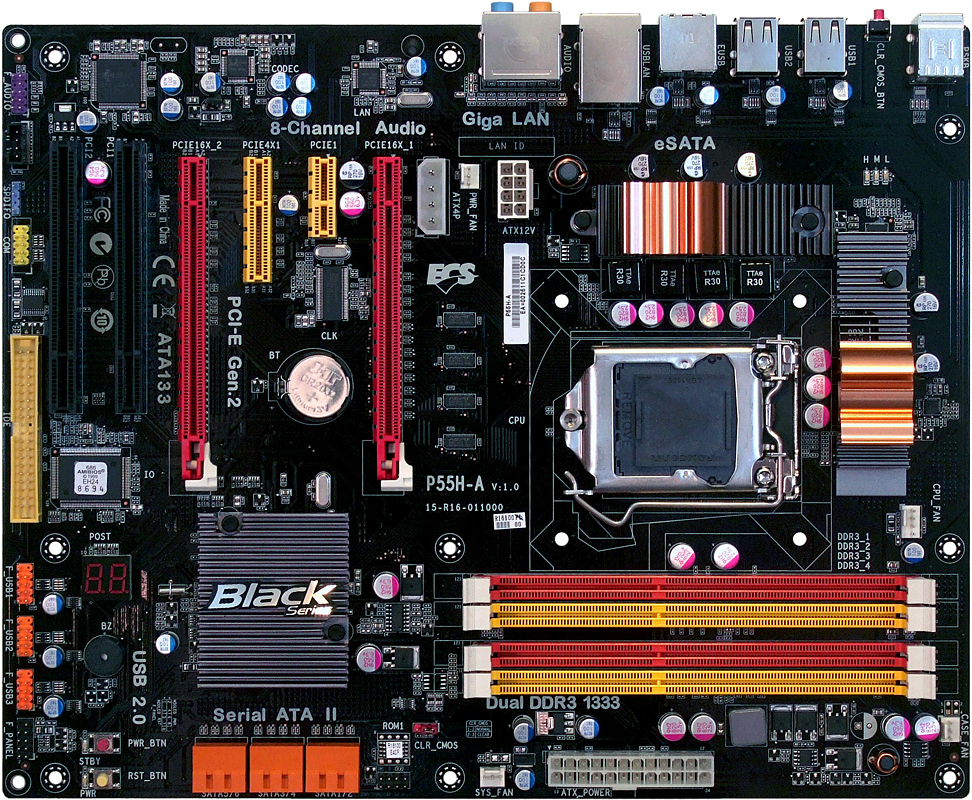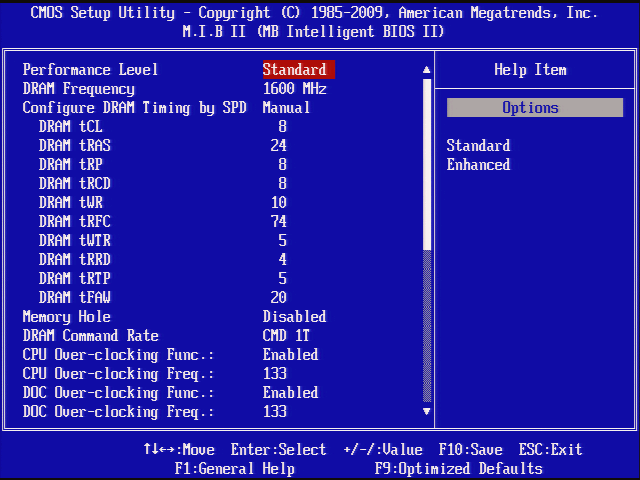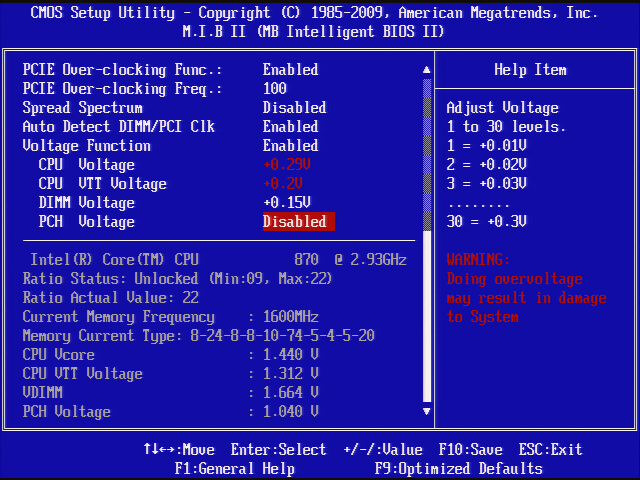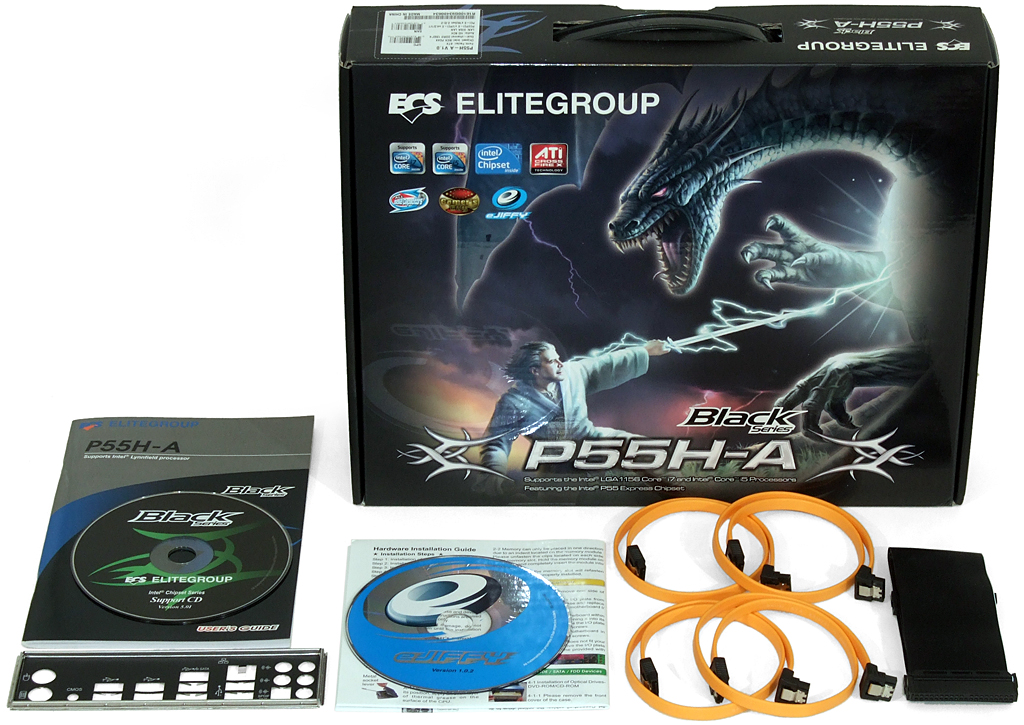P55 On A Budget: Five Core i5/i7 Motherboards For $100-$150
ECS P55H-A
Famed for its low-cost products, Elitegroup Computer Systems has also produced a performance-oriented “Black Series” for several years to gain recognition among enthusiasts. Black Series motherboards also provide moderate feature and BIOS enhancements compared to the company’s other products, and the P55H-A is no exception. Internal power and reset buttons, a Port 80 diagnostics display, and an I/O panel CLR_CMOS button set the P55H-A apart from less expensive ECS products, while setting it ahead of similarly-priced models from better-known “enthusiast” brands.
A row of electronic pathway switches above the upper PCIe slot allows you to change modes from single x16 to dual x8 pathways when a second graphics card is installed, potentially making this a better choice than models limited to x16/x4 when building for high-end CrossFire graphics solutions. A x4 slot two positions below the upper slot provides enhanced bandwidth for medium-performance add-in cards, but its closed end unfortunately prevents use with longer x8 and x16 expansion cards.
While normally a freebie function of the multi-I/O controller, ECS includes no physical connection for the floppy drive that many Windows XP users require for adding RAID drivers during installation, but still includes the “added-cost” Ultra ATA interface. Though often added as a way to address older and low-cost optical drives, ECS places the Ultra ATA header beneath the lowest PCI slot where cable length issues generally restrict it to lower-bay hard drives.
A full-sized PCB has none of the physical support issues that plague smaller boards, but ECS still crowds the DIMM slots by moving its LGA 1156 interface forward, preventing some oversized coolers from being used in combination with four DIMMs. We’ll revisit that in our Test Settings page.
Our only other layout concern is the front-panel audio header in the bottom rear corner, a location that makes connecting top-panel or upper-bay jacks extremely difficult. This standard is one that should be abandoned, since most cases have front-panel jacks near the motherboard’s opposite corner.
BIOS
While the P55H-A hails from ECS’ Black Series enthusiast product line, its BIOS is best-targeted towards beginning overclockers. Only the most important settings are available in its simplified overclocking menu.
Get Tom's Hardware's best news and in-depth reviews, straight to your inbox.
Changing the Performance Level control allows access to CPU multipliers, a setting we left alone during benchmarks so as not to inhibit Intel’s Turbo Boost function. Beneath it are DRAM and memory latency settings that worked perfectly for us, which were a vast improvement over the non-functional settings of previous-generation Black Series motherboards.
CPU Vcore and Uncore voltage levels are both adjustable, which along with DIMM and PCH voltage, allow the board to achieve remarkable speeds given its limited menu options.
Accessories
ECS includes four right-angle SATA cables, an 80-conductor Ultra ATA ribbon, a driver CD, and a Linux-based OS. The “light” OS appears to be ECS’ answer to Asus’ Express Gate and can be loaded onto a hard drive before the main operating system is installed to allow fast access to integrated applications.
One other minor issue we must mention is that the autoloader for ECS’ driver CD doesn’t work with Windows 7. Users must instead install drivers manually if desired, at least until ECS starts issuing a new version of the disc.
